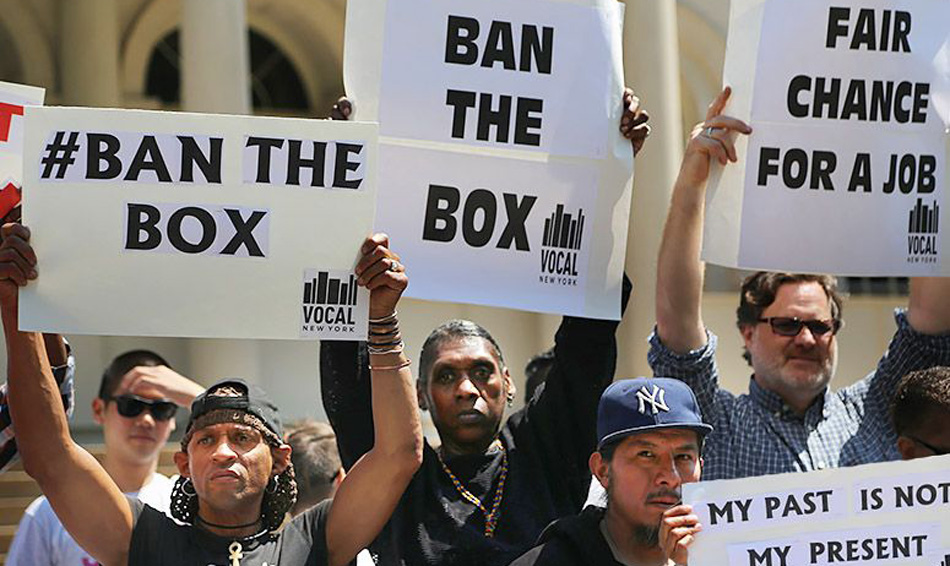
ST. LOUIS—A recent study by the Economic Policy Institute says that by the year 2032, people of color will be the majority of the U.S. working class. What can be concluded from this is that the fight to raise living standards for working people will be unavoidably intertwined with the fight for racial justice. As people of color become an ever larger portion of the workforce, the nature of employment and wage inequities take on broader meaning for the future of the labor movement.
Black and brown people are under constant attack in the U.S. due to systemic racism, reflected through state violence and the prison-industrial complex. The AFL-CIO, the country’s largest federation of trade unions, is aiming to take on these plagues on our society. Delegates to its national convention have passed two resolutions on diversity and criminal justice—but will these words be matched with action?
Diversifying the nation and the movement
On the opening day of the convention, federation President Richard Trumka, Secretary-Treasurer Liz Shuler, and Executive Vice President Tefere Gebre spoke with members of the press on what challenges this year’s convention would be taking up. One of them was the task of building greater unity of working people across racial lines.
Shuler noted that 49 percent of delegates at the convention are either people of color, women, or both. This is three percent higher than the previous mass meeting of the federation, but it still means 51 percent are white men. Gebre said the convention “will set the tone that we’re focused on growth and organizing—providing a voice for workers.” He emphasized, “That means all workers. We’re going to practice what we preach.”
At the opening plenary session, the question of racial justice was taken up on the convention floor. United Steelworkers International Vice President Fred Redmond, along with several co-sponsors, put into consideration a resolution titled: Ensuring Equity and Inclusion Internally and Externally. Redmond noted the proposal recognized that “when we’re fighting with each other, we’re not fighting for each other.” He said the resolution “establishes a clear goal to reflect the diversity of the workforce.”
The resolution comes two years after the AFL-CIO’s formation of its Labor Commission on Racial and Economic Justice. It was born out of the aftermath of the police murder of Mike Brown, a young African-American man, in Ferguson, Mo. The officer who killed him, Darren Wilson, was not indicted for the killing and served no jail time. Mike Brown’s death is part of a tragic legacy of Black people facing police brutality at disproportionate rates with little or no justice. The shooting sparked the creation of the Black Lives Matter movement, while placing systemic oppression of people of color center stage in American politics.
The commission’s 2017 report explained: “What happened in Ferguson sparked a national conversation about race, policing, and civil rights. Other events in Charlotte, N.C.; Tulsa, Okla.; Dallas; Baton Rouge, La.; and St. Paul, Minn.; and the election rhetoric of Donald Trump’s campaign, further inflamed race relations in our country. Many of our African-American, Latino, and Asian/Pacific-Islander union members feel a vote for Trump was a vote for racial exclusion, while many of our white members who voted for Trump say it was a vote for economic policies that will help working people. We are a nation divided, and our labor movement is divided, too.”
The Ensuring Equity and Inclusion resolution states “eradicating bigotry is not just the moral thing to do—it is the only way we will win these things for all working families and leave a better future for our children.” It calls for the AFL-CIO to:
– Build solidarity and understanding among union leaders and members on how race has been used to weaken labor unity, limit the growth of the labor movement, and damage efforts to advance economic reforms that benefit all working people.
– Build a more “diverse and inclusive labor movement.” It emphasizes the need to integrate the issues and concerns of members and workers of color into labor’s political and policy work at every level.
– Work to ensure that labor’s leadership and decision-making structures reflect the diversity of not only their own members, but of all working people.
The resolution sparked a spirited discussion in the convention hall.
Vice-President-at-large of the South Florida AFL-CIO, Lovette McGill, spoke on the floor referencing the history of racism in the United States. “Why are we still fighting this 50 years from the time of Jim Crow and segregation? Why are we still fighting this same issue? As a Black woman in a male-dominated industry, the International Longshoremen Association (ILA), we can’t just adopt the resolution. We have to fight!”
McGill is part of a long legacy of Black women leading the charge for equal rights and a better standard of living for working-class people. Black women continue to face intense marginalization and oppression in not only the workplace, but in all areas of life. This demographic still faces a significant wage gap and is more likely to work in lower-paid occupations such as fast food, retail, and the service industry. Black women are perhaps the best reflection of the racial (and gender) disparity when it comes to working people.
Delegate Doug Moore of the American Federation of State, County and Municipal Employees (AFSCME) took to the convention floor in support of the resolution. Moore said, “We have to educate ourselves on implicit bias. We are in a time when our President of the United States has tried to divide us based on race and racist appeals.”
Referring to an incident at AFL-CIO’s Diversity and Inclusion Pre-Conference, where delegates joined protesting Black Lives Matter (BLM) activists outside after convention center management denied them and Missouri State Rep. Bruce Franks entry, Moore said, “We have to refuse to be separated from our community. We have to stand up against state violence and racism.”
Ending the profit-prison pipeline
Moore echoed the sentiments of another convention resolution, titled Criminal Justice Reform: A System of Corrections and Rehabilitation That Prioritizes Corrections and Rehabilitation. The resolution states that “racial profiling and mandatory sentencing disproportionately harm people of color. From police stops to arrests, to charges pressed and convictions, our justice system treats people of color more harshly than whites.”
The secretary-treasurer of the American Federation of Teachers, Loretta Johnson, presented the resolution. “Our nation’s racial history is our nation’s economic history,” she proclaimed. “When the South lost its enslaved labor, the government created new ways to get forced labor—of predominately Black Americans—and that was through mass incarceration. Capitalism and the U.S. incarceration system are greatly intertwined,” she went further.
Johnson noted the fact that the United States has the highest rate of incarceration in the industrial world. “The prison industry has expanded and is affecting people of color. The labor movement has an obligation to help the disenfranchised. We must end the profit-prison pipeline in this country,” she concluded.
Fred Redmond spoke on the power of the union concerning the Ban the Box campaign, which challenges employers to choose applicants based on job skills and qualifications, not past convictions. The campaign aims to combat discrimination in housing and employment against those who are released from jail. Often those with felony convictions are required to check a box on applications which can often disqualify them from employment, housing, and other resources. “We can use our union power to ban the box at the bargaining table,” Redmond exclaimed.
United Food and Commercial Workers International President, Robin Williams, who is African-American, spoke to the resolution, explaining, “Many of the people lost in the prison-industrial complex look like me. In order for labor to grow, we can’t afford to leave anyone behind.”
Other delegates took to the floor to share their experiences with white privilege and unfair treatment based on race in the eyes of the law. Leo Gerard, president of the United Steelworkers, shared an anecdote in which he was pulled over by a police officer for a traffic offense. He said that he argued with the officer and even cursed at him, but was only given a citation. “If I had been Black,” he said, “you can bet my ass would have been in jail.” He told delegates that “there is no doubt white privilege exists, brothers and sisters.”
The necessity of discussing such topics was clearly expressed by many of those who rose to speak. And it was obvious that it is a conversation that needs to be had internally as well. As Jim Gibbs, a leader of the United Mine Workers and a delegate Florida, said from the floor, “When I see a young Black man get shot and nobody in our union says a damn thing, we’ve got problems in our own house.”
Words have to be matched with tangible action. Gibbs said, “Dr. King didn’t give his life for all of us to sit on our ass and feel good.”
The passed resolution states “that the AFL-CIO shall actively support criminal justice reforms based upon previously passed policy positions: community policing, sentencing reform, removal of employment obstacles for the formerly incarcerated, restrictions on for-profit prisons and voting rights restoration.” It calls for the AFL-CIO to:
– Advocate for greatly expanded funding for behavioral and mental health as a more effective and humane alternative to incarceration.
– Support efforts to reduce mandatory minimum sentencing laws, support “ban the box” legislation, and restore the rights of the formerly incarcerated.
– Promote federal, state and local legislation, policies, and practices that end the for-profit pipeline of correctional facilities or services. Detention and imprisonment, it says, are “inherently governmental functions,” and contracting them out creates an incentive for private prison companies to push for mandatory minimums and harsh practices to ensure a large prison population. This makes damaging impacts on society and undermines the legitimacy of the law.
In the wake of Charlottesville, with the polarization around race in this nation laid bare, the two resolutions take on special importance. Divisions based on race are no doubt being fueled by a president that refuses to take a firm stance condemning hate and bigotry. The discussion on the convention floor repeatedly emphasized issues of white privilege, the need for more people of color in union leadership positions, and a continuation of the “difficult and not always comfortable” conversations around race.
AFL-CIO President Richard Trumka weighed in on the fight for racial justice. “What is the role of the American labor movement in a polarized nation?” he asked. “The labor movement can no longer be in the middle. We have to be at the tip of the spear that attacks racism and discrimination.”
Updated Oct. 24, 7:30 p.m.










